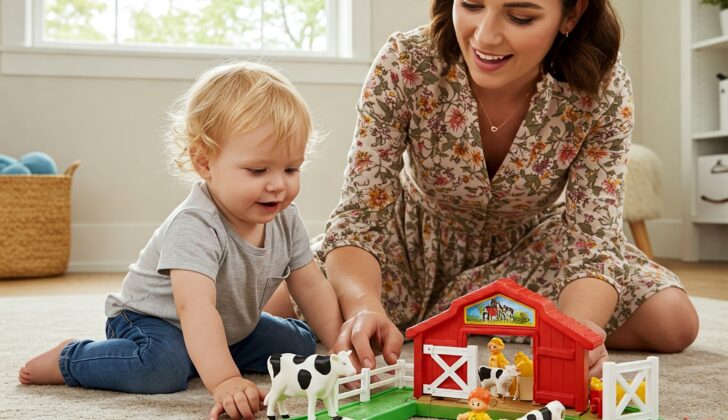Play is a child’s natural language. It’s how they explore the world, process experiences, and develop crucial skills. By following your child’s lead, you can create magical moments of connection and supercharge their language development through play. This article provides a step-by-step guide and scripts to help you become a playful language partner.
Why Follow Your Child’s Lead?
When you follow your child’s lead, you’re showing them that their interests and ideas are valued. This creates a safe and engaging environment where they feel comfortable communicating. It also allows you to target language development through play, which is a way that is meaningful and motivating for your child.
Step-by-Step Guide:
- Observe and Tune In:
- Step 1: Get down to your child’s level. Observe what they are playing with and how they are engaging with it. Are they stacking blocks, pushing a car, or pretending to feed a doll?
- Step 2: Resist the urge to direct the play. Instead, simply watch and see where their imagination takes them.
- Join the Play:
- Step 1: Once you understand the focus of their play, gently join in. You can sit beside them, pick up a similar toy, or mirror their actions.
- Step 2: Don’t take over! Your goal is to participate in their play, not change it.
- Comment and Describe (using “parallel talk” and “self-talk”):
- Parallel Talk: Describe what your child is doing. This helps them connect actions with words.
- Example: (Child is pushing a car) “You’re pushing the car! The car goes vroom! It’s going so fast!”
- Self-Talk: Describe what you are doing or thinking. This models language for your child.
- Example: (You pick up a block) “I’m going to put this block on top. Now I have two blocks!”
- Expand and Extend:
- Step 1: Once your child is engaged, you can start to expand on their play and language.
- Step 2: Add details, ask simple questions, or introduce new vocabulary related to their play.
- Example: (Child is stacking blocks) “Wow, you’re building a tall tower! I see a red block and a blue block. Can you put the green block on top?”
- Encourage Communication:
- Step 1: Create opportunities for your child to communicate. You can pause during the play and wait for them to say something, or you can ask open-ended questions.
- Step 2: Respond to their communication attempts, even if they are not clear words. Acknowledge their efforts and expand on what they say.
- Example: (Child points to a block) “You want that block? It’s a big, yellow block! Here you go.”
- Follow Their Lead Again:
- Step 1: After you’ve added your comments and expansions, let your child take the lead again. Continue to observe and follow their cues.
Example Play Session with Scripts:
(Child is playing with a farm set)
- Child: (Moves a cow) Moo!
- Parent: (Sits beside the child) “Moo! The cow says moo! You’re making the cow walk in the grass.” (Parallel talk)
- Child: (Puts the cow in the barn)
- Parent: “The cow is going into the barn. I wonder if the cow is going to sleep in the barn.” (Self-talk)
- Child: (Opens the barn door)
- Parent: “You opened the barn door! The cow can come out now. Where do you think the cow will go?” (Open-ended question)
- Child: (Moves the cow to the pig) Oink!
- Parent: “Oink! The pig says oink! The cow is visiting the pig. Are they friends?” (Parallel talk & Expanding)
- Child: (Nods)
- Parent: “They are friends! That’s nice. The cow and the pig are friends.” (Confirmation and expansion)
Continue following the child’s actions and using descriptive language, open-ended questions, and encouragement.
Key Tips:
- Be Present: Put away distractions and focus on your child.
- Be Enthusiastic: Show genuine interest in their play.
- Be Patient: Allow your child time to process information and respond.
- Be Flexible: Let the play unfold naturally. Don’t try to force it in a certain direction.
- Be Playful: Have fun! The more you enjoy the play, the more your child will too.
By following your child’s lead in play, you’re not just playing with them; you’re playing with language. These interactions create a rich environment for language development through play and strengthens the bond between you and your child.
Resources
For more information check out these resources:
- Self Talk and Parallel Talk Video
- Following Child’s Lead Video
- MDS: Encouraging Language Development at the Playground
Disclaimer: This article provides general information and suggestions. It is not intended as a substitute for professional diagnosis or treatment from a certified Speech-Language Pathologist. If you have specific concerns about your child’s speech development, please consult with a qualified professional in your area.











